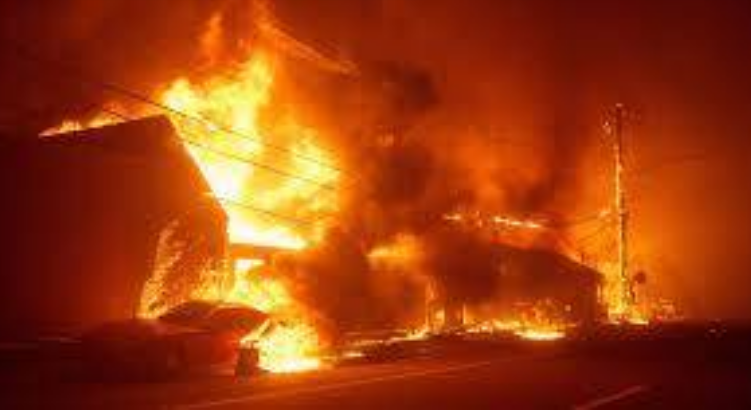Los Angeles (Web Desk/Agencies): The wildfires have swept through parts Los Angeles this week, wreaking havoc on communities and causing significant loss.
Six fires have been burning simultaneously, with the largest of them, the Palisades Fire, shifting direction over the weekend, pushing it dangerously closer to more densely populated areas.
The fire has already claimed the lives of at least 11 people and destroyed thousands of homes and structures. As of now, authorities have been unable to complete thorough searches of the affected areas, so the death toll is expected to rise.
The fires have burned over 35,000 acres, an area more than twice the size of Manhattan, and forced the evacuation of over 150,000 people.
Thousands more are living under warnings, anxiously awaiting news of the fire’s movement.
With the relentless Santa Ana winds easing slightly on Friday night, there was a glimmer of hope for the overwhelmed firefighting teams. However, the situation remains dire.
The Palisades Fire, despite some containment efforts, continues to challenge crews, especially as it spreads towards additional neighborhoods and foothills in the region.
The loss in these communities is immense. Entire blocks have been leveled, leaving behind only ash and the skeletons of what used to be homes.
For many, it’s impossible to process the extent of the destruction. People who returned to see what remained of their properties were met with the haunting sight of scorched earth and melted belongings.
Some were still trying to hold on to fragments of their lives, sorting through rubble and finding only small, irreparable remnants of the homes they once knew.
Alongside the immediate destruction, the fires have posed long-term challenges. Tens of thousands are without power, and the air quality has deteriorated drastically, filled with harmful particles from the burning buildings and vegetation.
Health officials have raised alarms about the toxic smoke, urging residents to stay indoors if possible.
The economic impact has been staggering, with preliminary estimates suggesting that recovery could cost upwards of $150 billion, a burden that will stretch beyond the fire's immediate toll.
Efforts to provide aid have been extensive, with help coming from across the country and even from Canada, offering assistance with aerial firefighting and ground support.
Meanwhile, residents are navigating a complex maze of insurance claims, government relief efforts, and uncertain timelines for recovery.
There’s growing concern over how resources will be allocated, particularly in areas where wealth and resources have historically been more abundant.
President Joe Biden declared a state of emergency, ensuring that federal funds will be available for recovery efforts, but for many, the road to rebuilding will be long, uncertain, and fraught with challenges.
As the fires continue to rage, the hope is that the reduced winds will give crews the upper hand, but with forecasts predicting more dangerous conditions in the days ahead, the fight is far from over.


